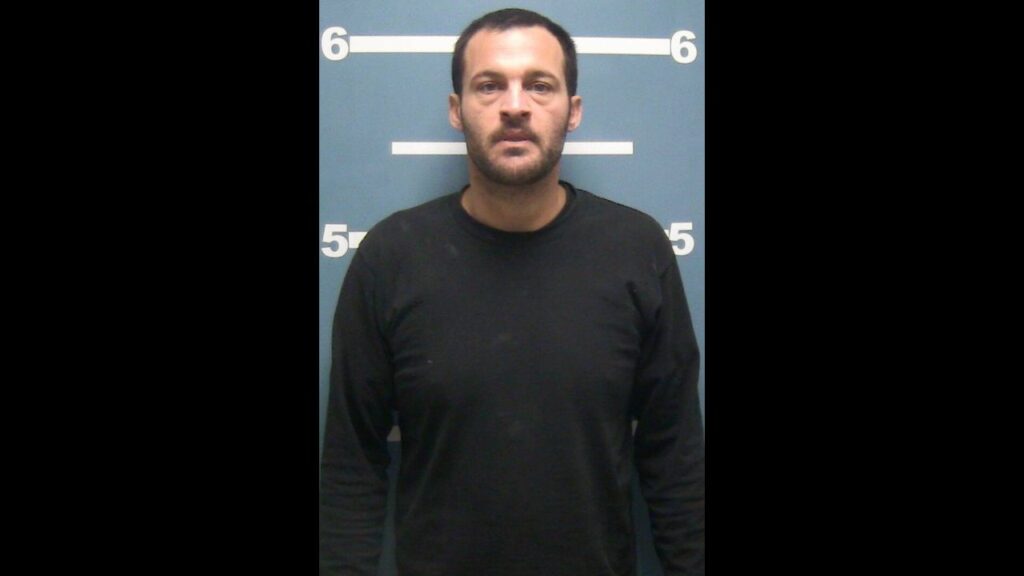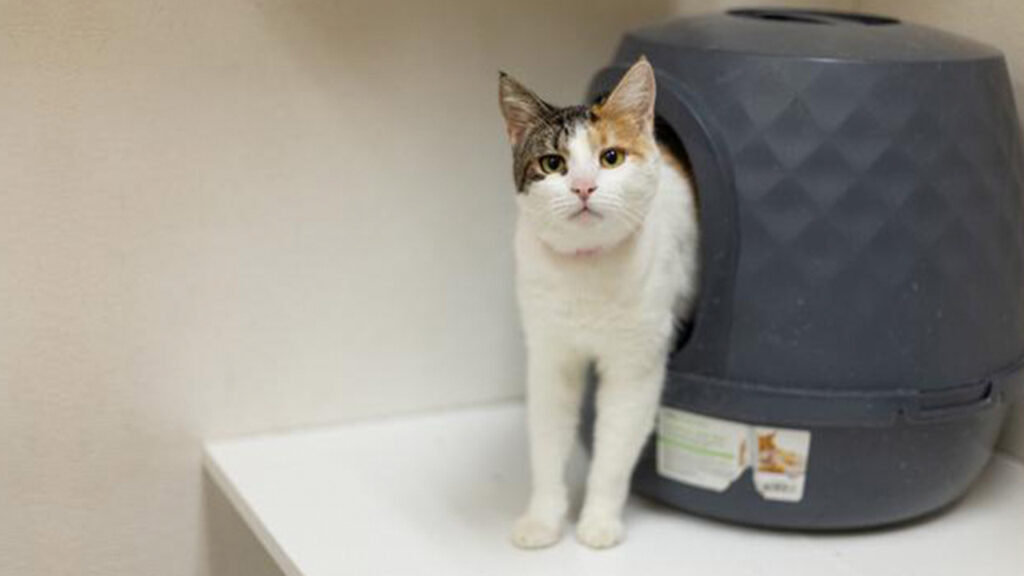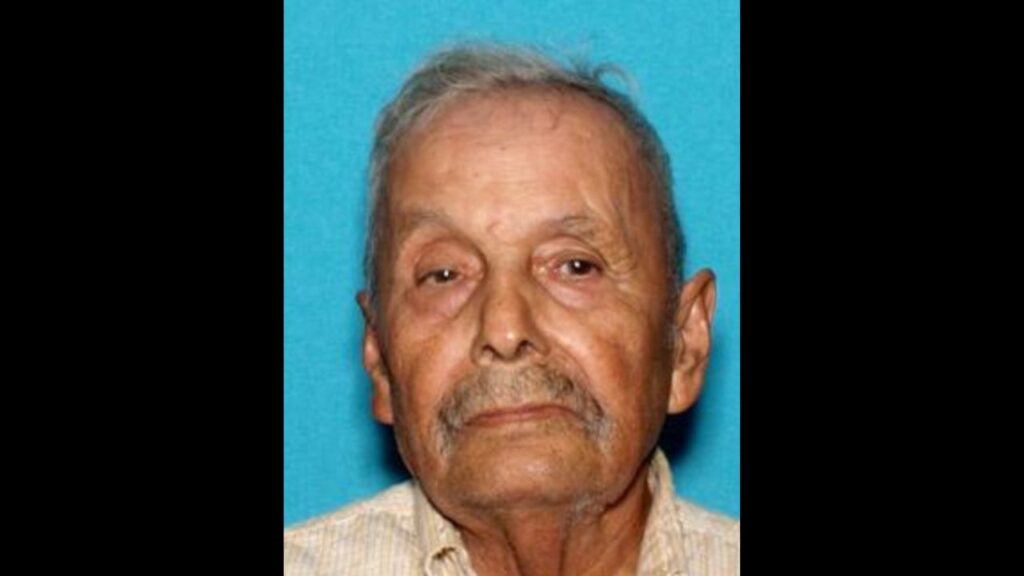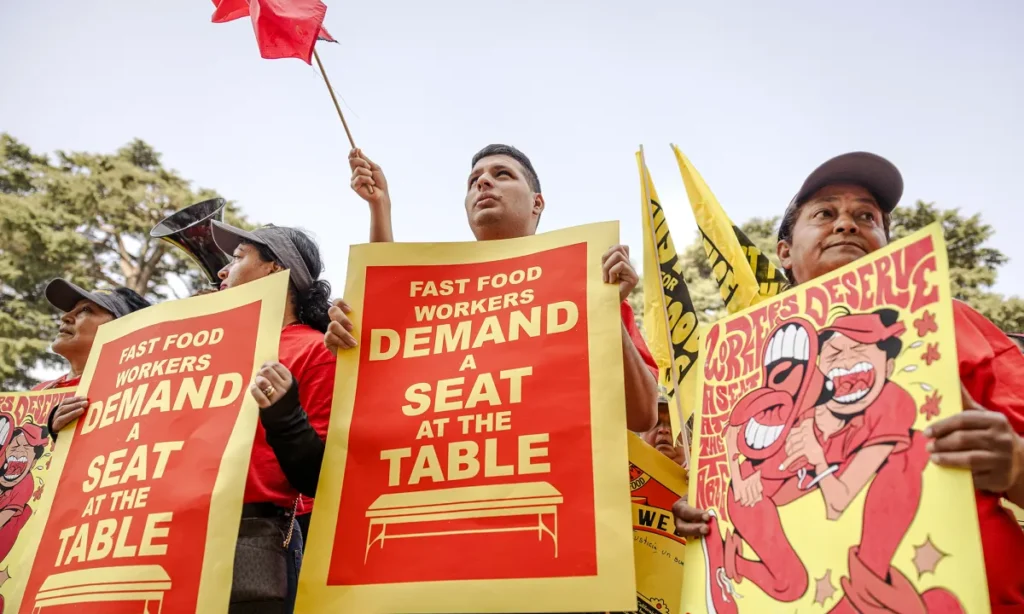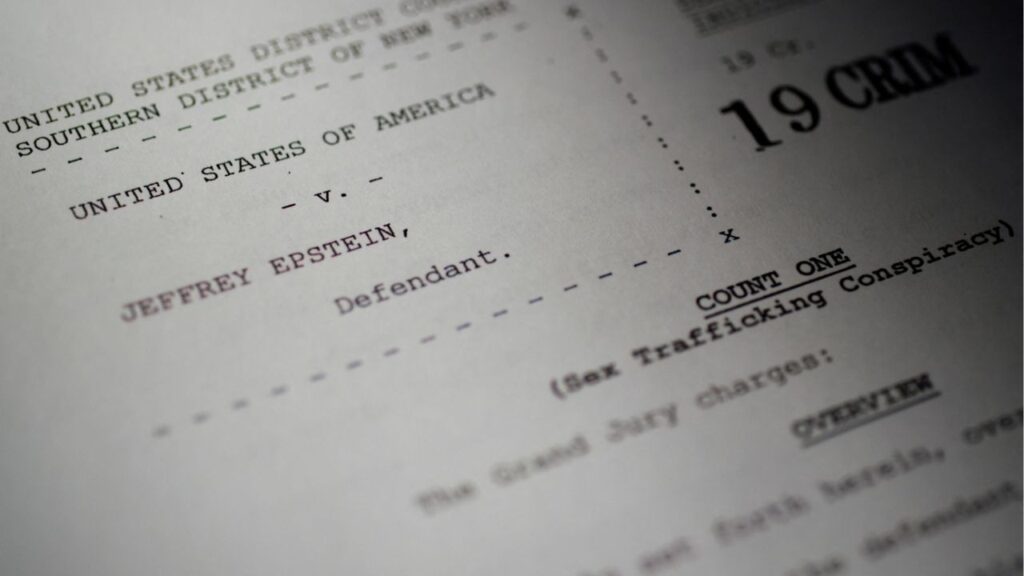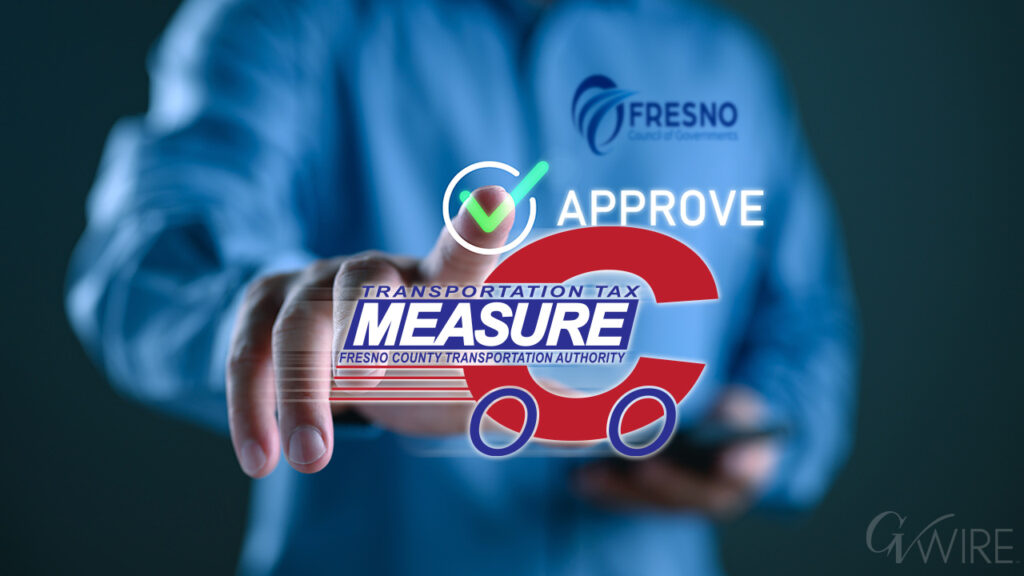Across the nation, cities are not renewing ShotSpotter contracts, saying the technology is expensive and ineffective. But many police officers stand by the technology, saying it helps in investigating crimes. (GV Wire Composite/Paul Marshall)

- Cities nationwide have decided not to renew contracts with ShotSpotter — the gunfire detection technology.
- Audits of ShotSpotter alerts show officers could not confirm shootings in 87% of calls in some cities.
- Officers often disagree with auditors saying statistics are complicated and that the technology improves response times.
Share
The revolutionary technology that promised to be law enforcement’s ears in the fight to combat gun violence has the nation divided on its effectiveness.
Studies from auditors and advocacy groups suggest the technology is expensive, ineffective, and an overreach of civil liberties. Many in law enforcement, however, say the technology is critical to effective policing.
ShotSpotter can be a major financial commitment to some cities. The New York Police Department spent $54 million on its contract to maintain 2,000 sensors throughout several boroughs to analyze loud noises, identify which are gunshots, and then alert police.
Fresno’s three-year contract costs $2.6 million.
In Fresno, the 1,802 ShotSpotter alerts in 2023 resulted in only 169 criminal cases — or 9% of the time, according to data from the Fresno Police Department sent to GV Wire. In 2022, 1,809 alerts resulted in 204 criminal cases, or 11%.

“(ShotSpotter) was able to narrow the detection of a gunshot down to a few feet to where when officers respond, they know with relative certainty that they were being directed into a location where the gunshot actually was.” — Fresno Mayor Jerry Dyer
But officers were able to pinpoint 171 gunshot victims over those two years as a result of the alerts.
Based on a ShotSpotter report officers can show up to a shooting scene faster than if they had to wait for a 911 call, according to Fresno Police Lt. Bill Dooley. ShotSpotter has been used in hundreds of cases, including two high-profile ones.
“Officers are alerted on their work phones, they’re alerted on the computers that are in their car at the same time that dispatch is getting them, and our officers are able to respond to those scenes so much faster,” Dooley said. “They were able to render aid, capture suspects, get a better idea of where the crime scene was just from the system.”
ShotSpotter Promises to Catch 90% of Gunfire. What About False Alarms?
In May, U.S. Congressional leaders called for an investigation into the technology. Three senators and a representative cited two studies that showed the technology often misclassified fireworks or car backfires as gunshots.
In February Chicago Mayor Brandon Johnson said that after the city’s ShotSpotter contract expires Sept. 22, the city would not renew it. The city joins Atlanta, Georgia, Charlotte, North Carolina, New Orleans, San Antonio, Texas, and others in not renewing contracts. Concerns about the technology echo each other.
ShotSpotter guarantees to catch at least 90% of shootings. The company boasts a 97% accuracy on that front over the past three years. But while the company promises to catch confirmed shootings, it doesn’t have the same guarantee that all calls will indeed be shootings.
Related Story: NYC Audit Says Shotspotter Gunfire Detection System Is a Waste of Money
When microphones pick up possible gunfire, an algorithm reviews the sound, according to a company spokesperson. It then gets reviewed by a live person and if the company identifies the noise as gunfire, police are notified.
Several studies throughout the past three years all drew the same conclusion — that the service cannot differentiate between loud noises such as fireworks or car backfires and gunshots.
One of the more recent studies, done by New York City Comptroller Brad Lander, showed officers could only confirm shootings 13% of the time, with almost 427 hours spent investigating those alerts over an eight-month period.
In those calls, officers were not able to find witnesses, shell casings, or impact damage to indicate a call was indeed from gunfire. Lander estimates officers spent 426.9 hours spent investigating alerts on unconfirmed shootings in the eight-month period analyzed by the comptroller.
“The evidence shows that NYPD is wasting precious time and money on this technology and needs to do a better job managing its resources. Chasing down car backfires and construction noise does not make us safer,” Lander said in a release from his office. Lander’s analysis led him to call for an in-depth study before approving it later this year.
The MacArthur Justice Center at Northwestern University in 2021 studied ShotSpotter’s use with the Chicago Police Department. Eighty-nine percent of calls turned up no gun-related crime. In less than two years, more than 40,000 alerts could not be verified as gunshots.
“The evidence shows that NYPD is wasting precious time and money on this technology and needs to do a better job managing its resources. Chasing down car backfires and construction noise does not make us safer.” — New York City Comptroller Brad Lander
New York City Mayor Eric Adams stood by ShotSpotter, calling it an “amazing tool.”
In its response to Lander’s study, the New York Police Department said it was not always possible to prove a gunshot happened. Revolvers don’t leave casings. People can also clean up them up. If fired from a vehicle, they might not be found.
To the matter of hours spent investigating ShotSpotter alerts, the police department said the nearest officer responds to calls and they are often close to the scene.
“ShotSpotter remains an integral tool in the NYPD’s mission of addressing gun violence and keeping the public safe,” a statement from the department to GV Wire read.
ShotSpotter Stats for Fresno
Fresno ShotSpotter data for 2023 from Fresno Police:
- 1,802 ShotSpotter alerts
- Approximately 6,400 shots identified
- 169 criminal cases developed
- 71 gunshot victims located as a result of the activation
- 40 victims received medical aid from first responding officers
- 6 cases resulted in murder
ShotSpotter data for 2022
- 1,809 ShotSpotter alerts
- Approximately 7,300 shots identified
- 204 criminal cases developed
- 100 gunshot victims located as a result of the activation
- 59 victims received medical aid from first responding officers
- 23 cases resulted in murder
ShotSpotter Saves Victims, Protects Officers: Dyer
Fresno Mayor Jerry Dyer was the city’s Chief of Police when he recommended deploying ShotSpotter. The technology has existed for a long time but it wasn’t until he saw ShotSpotter that he felt the technology was refined enough to be useful. The city first implemented it in 2015.
Now, ShotSpotter covers 17 square miles in Fresno, covering all five policing districts, according to Fresno Police Department.
“It was able to narrow the detection of a gunshot down to a few feet to where when officers respond, they know with relative certainty that they were being directed into a location where the gunshot actually was,” Dyer said.
A 911 call might narrow down gunfire to a city block. ShotSpotter can narrow it down to feet. That level of exactness means safety for officers who are going blindly into an area, Dyer said. Beyond that, when he was still chief, 70% of ShotSpotter alerts did not have 911 calls. Police might not have known about a shooting without the technology.
“That is critical when you’re talking about somebody that has been shot,” Dyer said. “No one’s calling in, and ultimately that person doesn’t have an opportunity to be saved.”
ShotSpotter Used in High Profile Cases
In 2017, Kori Muhammed went on a shooting spree, killing four people throughout some parts of Fresno. Dyer and Dooley both said ShotSpotter was crucial in catching him.
As Muhammed moved throughout the city, ShotSpotter narrowed down where he was, and officers used that information to find him.
“It was able to tell the officers the location of the first gunshots reported, the second gunshots reported, the third gunshots reported, which ultimately allowed the officer to respond in an area in which he thought the suspect was running,” Dyer said. Knowing where Muhammed was also kept officers safe, he added.

ShotSpotter’s accuracy provides other useful information as well.
The acoustics ShotSpotter picks up can identify the caliber of gun, and even if the shot came from inside a car, Dooley said. It can determine the distance between two shooters.
“It’s a huge benefit when it comes to the follow-up investigations and building cases,” Dooley said.
In 2016, a shooting caused the death of 20-month-old Rashad Halford, Jr. Dyer said the shooter had claimed self defense, but ShotSpotter could determine which gun was fired first, and the evidence was crucial for prosecutors, he said.
Effectiveness, Civil Rights Spurred Action Against ShotSpotter with Cities, Congress
A 2022 report from the Associated Press called into question the human portion of the ShotSpotter equation. A document acquired by the news agency showed that in 2021, 10% of the alerts were reversed by humans, bringing subjectivity into the determination of whether something is a gunshot or not.
Comptroller Lander in New York went so far as to claim the high rate of false alarms was to ensure their 90% accuracy guarantee.
ShotSpotter technology is often used as evidence in trials. An employee told the Associated Press in 2022 that determining which sounds are gunshots is difficult.
“Classification is the hardest element of the process, simply because we do not have control over the environment in which the shots are fired,” said Paul Greene, a ShotSpotter employee who testifies regularly. The Associated Press quoted Greene.
Analysts have also said the placement of sensors increases policing in low-income neighborhoods and neighborhoods of color.
WIRED Magazine acquired a map of all sensors in 2022. ShotSpotter’s parent company, SoundThinking, did not dispute the map.
The map showed that 70% of people who live in a neighborhood with a sensor identify as Black or Latino. Where 19% of the population in Fort Myers, Florida is Black, 41% of the population living near at least one sensor is Black, according to the congressional letter.
In Winston-Salem, North Carolina, only 13% of the population living near at least one sensor is white, whereas 43% of the population in general is white.
Neighborhoods with ShotSpotter are also typically poorer, according to the congressional letter.
Dyer said the decision on where to put sensors is based on which neighborhoods have the most gun violence.
“The reality is most violence unfortunately occurs in neighborhoods that are underserved and oftentimes area that are impoverished and neighborhoods of color. That’s the unfortunate reality of policing,” Dyer said. “So, to take ShotSpotter away, in my opinion, reduces the level of service to those neighborhoods.”





